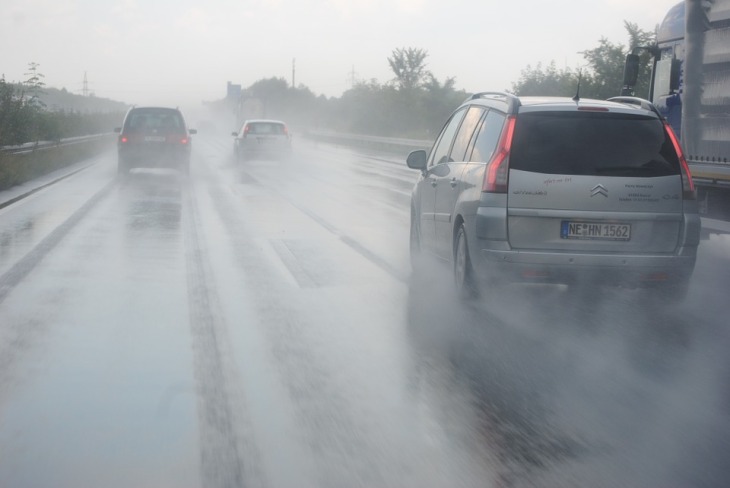Driving is very joyful on a good day but nothing can be riskier than driving on a rainy day. When there is too much water on the road for the tires to maintain contact with the ground results in hydroplaning. Due to hydroplaning, steering output could change which often leads to accidents. When there isn’t sufficient tread to wick the water away from the contact patch, surface tension actually lifts the tire off the surface.
At speed up to 45 Km/hr., tires with good treads will remove the water beneath the tire surface but as the speed increases, the risk of losing grip over road also increases significantly. The other factor which leads to hydroplaning is the amount of water on the road & the tire’s sensitivity to water depth. At 70-80 km/hr, the tires may lose all the contact on the road.
How to stop it:
It is nearly impossible to avoid hydroplaning on wet roads while driving at very high speed but you minimize the risk by using a component that we often ignore, tires.
 Premium tires have improved tread design and hollow grooves that work together to channel water away to reduce hydroplaning. Gradually, the tire tread depth gets more shallow which results in skids. The best way to diminish the hydroplaning is to avoid the components that lead to it. Proper tire pressure, narrow and unworn tires, and reduced speeds from those judged suitably moderate in the dry will mitigate the risk of aquaplaning, as will avoidance of standing water.
Premium tires have improved tread design and hollow grooves that work together to channel water away to reduce hydroplaning. Gradually, the tire tread depth gets more shallow which results in skids. The best way to diminish the hydroplaning is to avoid the components that lead to it. Proper tire pressure, narrow and unworn tires, and reduced speeds from those judged suitably moderate in the dry will mitigate the risk of aquaplaning, as will avoidance of standing water.
Electronic stability control systems cannot replace defensive driving techniques and proper tire selection. These systems rely on selective wheel braking, which depends in turn on road contact. While stability control may help recovery from a skid when a vehicle slows enough to regain traction, it cannot prevent aquaplaning.Because pooled water and changes in road conditions can require a smooth and timely reduction in speed, cruise control should not be used on wet or icy roads.You can use premium tires made by Pirelli & Continental to diminish the risk of hydroplaning.

